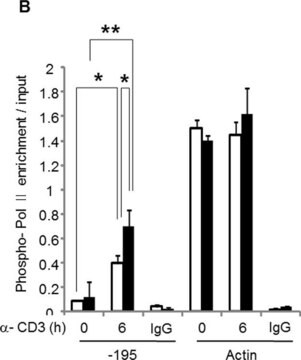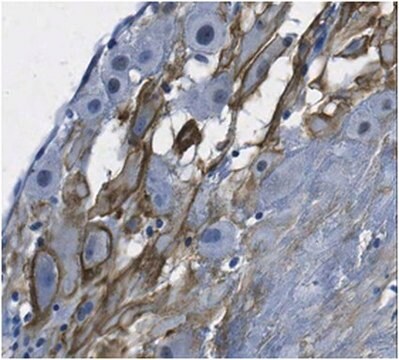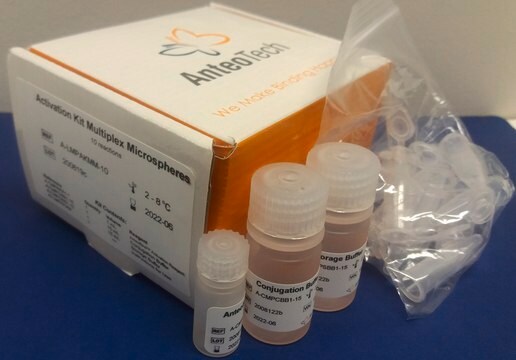MABS436
Anti-ATE1 Antibody, clone 6F11
clone 6F11, from rat
Synonim(y):
Arginyl-tRNA--protein transferase 1, Arginyltransferase 1, R-transferase 1, Arginine-tRNA--protein transferase 1
About This Item
Polecane produkty
pochodzenie biologiczne
rat
Poziom jakości
forma przeciwciała
purified immunoglobulin
rodzaj przeciwciała
primary antibodies
klon
6F11, monoclonal
reaktywność gatunkowa
human, mouse
metody
immunocytochemistry: suitable
western blot: suitable
izotyp
IgG2bκ
numer dostępu NCBI
numer dostępu UniProt
Warunki transportu
wet ice
docelowa modyfikacja potranslacyjna
unmodified
informacje o genach
human ... ATE1(11101)
Opis ogólny
Immunogen
Zastosowanie
Signaling
Signaling Neuroscience
Western Blotting Analysis: A representative lot detected ATE1 in ATE1 isoforms and mouse liver extract tissue lysate (Wang, J., et al. (2011). Chemistry & Biology. 18:121-130).
Immunocytochemistry Analysis: A representative lot detected ATE1 in immunostaining and cell extract preparation, immortalized mouse embryonic fibroblasts derived from wild-type and Ate1 cells (Wang, J., et al. (2011). Chemistry & Biology. 18:121-130).
Jakość
Western Blotting Analysis: 0.5 µg/mL of this antibody detected ATE1 in 10 µg of HepG2 cell lysate.
Opis wartości docelowych
Postać fizyczna
Przechowywanie i stabilność
Inne uwagi
Oświadczenie o zrzeczeniu się odpowiedzialności
Nie możesz znaleźć właściwego produktu?
Wypróbuj nasz Narzędzie selektora produktów.
Kod klasy składowania
12 - Non Combustible Liquids
Klasa zagrożenia wodnego (WGK)
WGK 1
Temperatura zapłonu (°F)
Not applicable
Temperatura zapłonu (°C)
Not applicable
Certyfikaty analizy (CoA)
Poszukaj Certyfikaty analizy (CoA), wpisując numer partii/serii produktów. Numery serii i partii można znaleźć na etykiecie produktu po słowach „seria” lub „partia”.
Masz już ten produkt?
Dokumenty związane z niedawno zakupionymi produktami zostały zamieszczone w Bibliotece dokumentów.
Nasz zespół naukowców ma doświadczenie we wszystkich obszarach badań, w tym w naukach przyrodniczych, materiałoznawstwie, syntezie chemicznej, chromatografii, analityce i wielu innych dziedzinach.
Skontaktuj się z zespołem ds. pomocy technicznej








